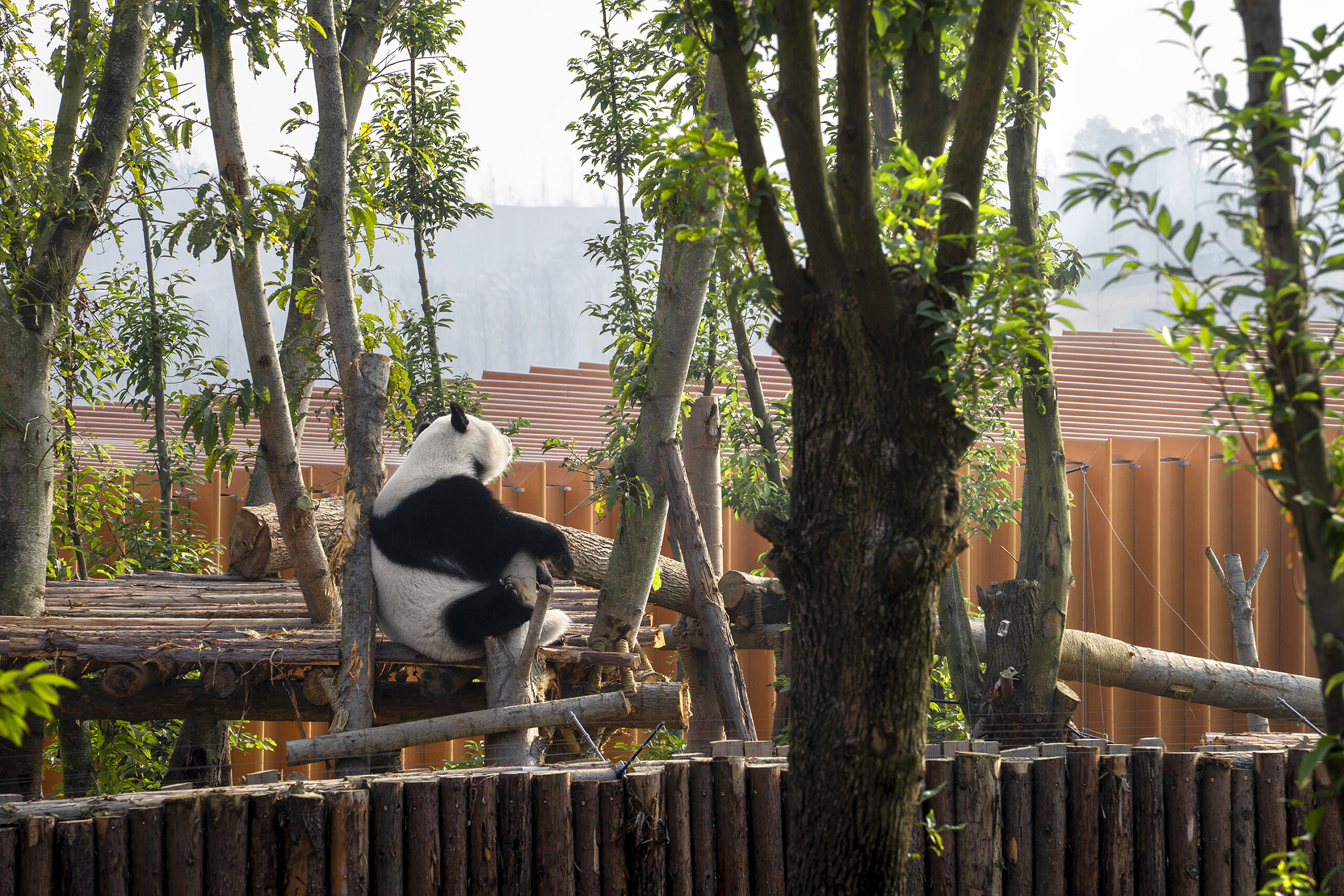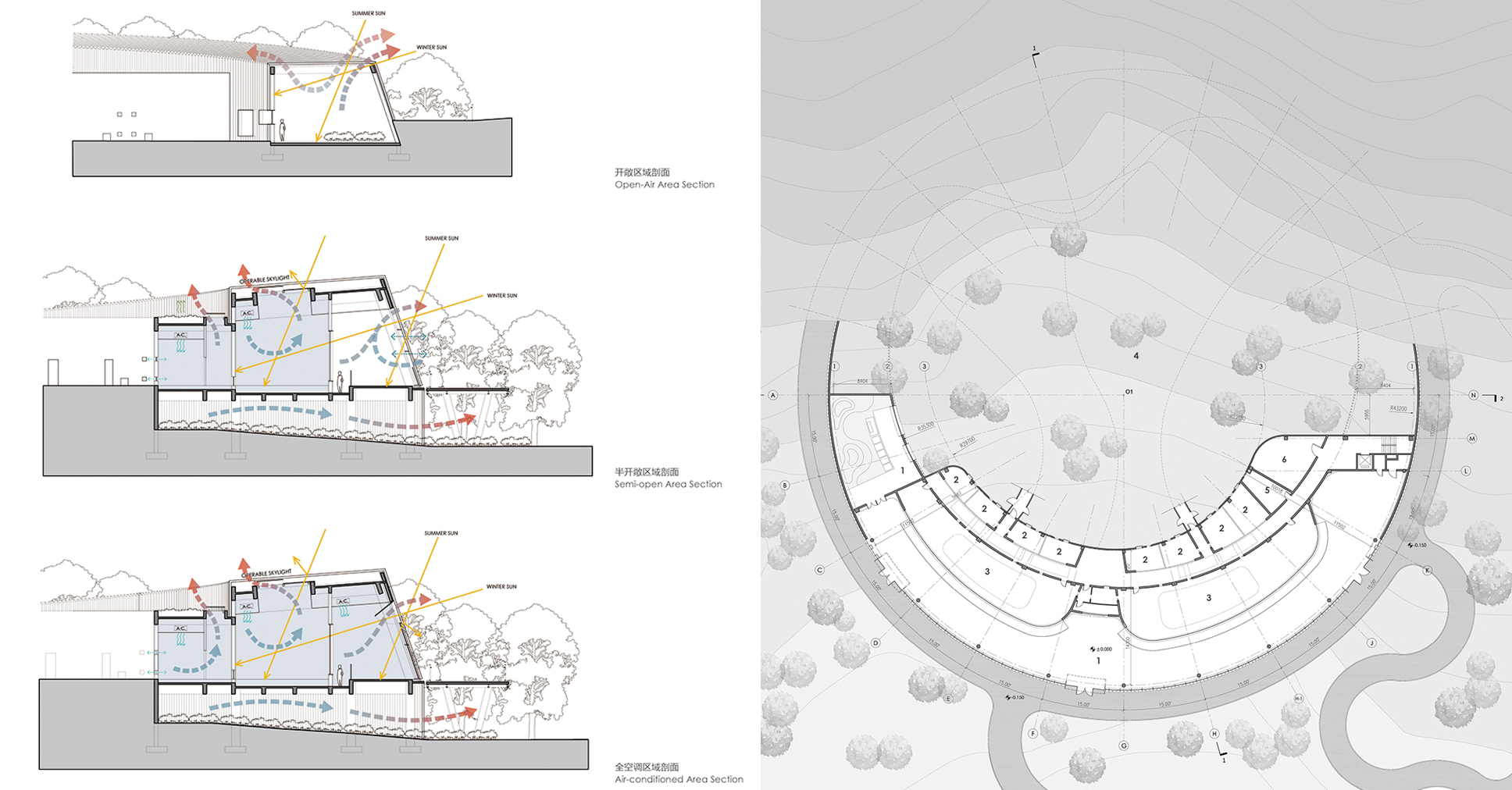Sustainable Practice: The Chengdu Panda Pavilions and the Architecture of Immersive Conservation
The jury and the public have had their say — feast your eyes on the winners of Architizer’s 12th Annual A+Awards. Subscribe to our Awards Newsletter to receive future program updates.
The problem with news media, particularly in the social age, is the propensity to focus on negatives. This is rarely more obvious than coverage of climate and the environment.
On the one hand, denialist tendencies are exhibited by some corners of the press, usually in the form of scathing critiques taking aim at arguments based on modeling and estimates rather than “hard facts.” A disparaging light in which to cast any scientific study, let alone those relating to a crisis we are now watching happen in real-time.
On the other side of the fence, green-aligned journalism is the stuff of nightmares. Unless we choose a different path, we are essentially on a collision course with searing temperatures, the collapse of vital natural systems, the disappearance of most species and, eventually, the complete exhaustion of resources.
This blunt object narrative is clearly necessary, considering the academic consensus that climate change is definitely taking place and poses an existential threat to life on Earth. Yet, we’re not actually doing very much about it at any reasonable pace. Shock and awe is an obvious tactic.
Nevertheless, it’s also important to celebrate and trumpet the victories that have come from our painfully slow movement towards more environmentally conscious attitudes. If everything is doomed there might not be much point in trying. If policies are working to mitigate and restore, telling people about it means there’s more chance of them taking an interest in getting involved.


Inside The Panda Pavilions at The Chengdu National Giant Panda Research and Breeding Center by Atelier Ping Jiang | EID Arch, Chengdu, China
Conservation is one of the biggest shifts in how we view the planet and all its inhabitants. The fact we’re losing species faster than at any other point in recorded history is a product of how bad things have been allowed to get for centuries, and how difficult wildernesses are to police, not a lack of effort to stop the decline today.
Bald eagles, California condor, the swift fox, and licking river mussels are all examples of US wildlife success stories. Species that were driven almost to the point of extinction, before clawing their way back from the brink with some human assistance. Outside the United States, there are many more cases like these.
The Giant Panda is one. By the 1980s, just 1,100 or so of these incredible creatures were thought to still exist in China. A decade ago, new estimates put this closer to 2,000 and rising. In response, the International Union for Conservation of Nature (IUCN) removed them from the Red List of Threatened Species.
The Chengdu National Giant Panda Research and Breeding Center has played an integral role in this recovery, and while there is still a very long way to go before we can consider pandas ‘safe’, the institution is already preparing for the future of its vital work. The world’s leading site of study for this type of bear has recently expanded with an Atelier Ping Jiang | EID Arch-designed series of structures made from wood-grained aluminum and bamboo.

External view of The Panda Pavilions by Atelier Ping Jiang | EID Arch, Chengdu, China
Aesthetically made to reflect the vast prairie landscapes beyond the sprawling city of Chengdu-proper, the four ring-shaped pavilions complement the sloped parklands outside the walls. Some elements sink beneath the ground or tree line, and others rising above them, and offer both behavioral research labs for the scientists and the living habitats of the pandas themselves.
Outdoor terraces and indoor areas provide spaces for the animals to play, sleep and eat. Administrative offices and rooms for preserving and storing the bamboo that plays such a dominant part in panda diets, and interactive educational and exhibition spaces are also located within the same structures. This means the third stakeholders — visitors — quickly find themselves fully immersed in both the human-led studies and the daily life of bears.


The Panda Pavilions by Atelier Ping Jiang | EID Arch, Chengdu, China
Breaking down the fourth wall, in a manner of speaking, and offering a seamless integration between bears, researchers and members of the public is essential to create a sense of participation in the preservation and research process. An important win when we need to engage with far wider numbers on issues such as species decline, and just how precious living things are.
“The design of the panda pavilions concerns with the integration of human experience, architecture and environment. It is intended as a convergence of architecture, landscape and land art. While the project provides a pedestrian friendly navigation experience for the visitors, it prioritizes an animal-friendly environment to minimize the alienation of ecology, promoting biodiversity conservation,” Jiang says of the project. Looking at the results, it would seem there’s another environmental success story worth celebrating.
The jury and the public have had their say — feast your eyes on the winners of Architizer’s 12th Annual A+Awards. Subscribe to our Awards Newsletter to receive future program updates.
